Magnificent Muffin Mania:
GCHBA Volunteer Service Project - in Grand Canyon NP /
Grand Canyon Hikers and Backpackers Ass. (GCHBA) / Painting Shade Structures at IG, Replacing the Indian Garden
Ranger Station Deck, Tiling the BA Bathrooms, and much more
(October 23 to November 1, 2017)
Text
© copyright by Rob; and Photos © copyright by Rob Jones
|
 |
Co-Adventurer VIPs: Annette A., Cuyler B., Tom B., Barry B., Holly B., Kathy H., Mike H.,
India H., Bill J., Rob J., Wendy L., and Cheryl VH.
Mule packing by packers of the NPS
(National Park Service).
Site-based planning by Elyssa S. and Jeff S. (with thanks to Debbie B.,
Canyon Ranger District; Todd N., NPS)
GCHBA planning and organization by Rob Jones, GPP-SP
(Grand Penultimate Poobah of GCHBA Service Projects).
VIP is Volunteer In Park.
This volunteer service project was supported by the NPS people who put the "Service!"
in NPS; and by the members and Board of the GCHBA (Grand Canyon Hikers and Backpackers Association). Thanks for
your stewardship of our precious public lands.
camera: Panasonic DMC-ZS60
Note: the opinions in this report are not necessarily those of the GCHBA or its Board.

|
|---|
Chickadee seeks water, Day 1
(Click the image for the full-size image)
|
|---|
|

|
|---|
Curious Ram (Bighorn Sheep), Day 2
(Click the image for the full-size image)
|
|---|
|
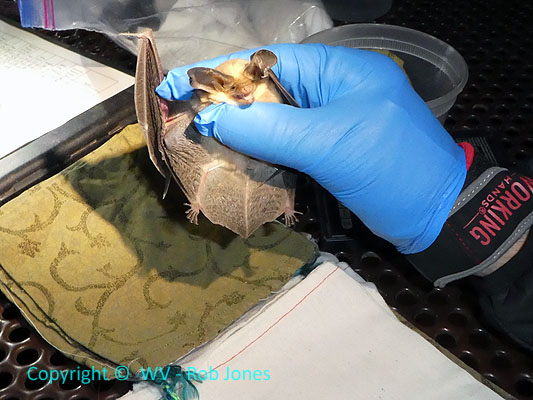
|
|---|
Unhappy Bat at IG, Day 2
(Click the image for the full-size image)
|
|---|
|

|
|---|
VIPs paint the visitor contact station, Day 4
(Click the image for the full-size image)
|
|---|
|

|
|---|
Installing the RS Deck, Day 6
(Click the image for the full-size image)
|
|---|
|

|
|---|
Woman Power clears the jungle trail, Day 6
(Click the image for the full-size image)
|
|---|
|

|
|---|
Rehabilitating the signs, Day 7
(Click the image for the full-size image)
|
|---|
|

|
|---|
Local color at Pipe Creek, Day 10
(Click the image for the full-size image)
|
|---|
|
ERM = Energy Required Miles. A mile is added for
every 500' elevation gain or
loss. It's a very serviceable method of estimating energy required miles. ERM was initially used in Trails
of the Tetons (long out of print) by Paul Petzold, founder of NOLS. It's a wonderfully useful concept and
application. Add one mile for each 500' up AND down to distance = ERM. I use ERMs to calculate what the actual
day is like. It's a very serviceable method of estimating energy required miles. Remember, however, that the
ERMs are estimates because they depend on GPS satellite coverage and math functions.
Using ERMs does not account for the 'texture' of the route or trail - that
is, rocky, boulders, no trail, slimy mud, etc., yet does help approximate the route.
See more information about ERMs at the end of this report.
Overview: This is another report about a GCHBA
(Grand Canyon Hikers and Backpackers Association) volunteer service project in The Canyon. This time,
our group of 11 VIPs (Volunteer In Park) was split between IG (Indian Garden); where we replaced the Ranger
Station deck, painted all the metal poles for the shade structures (ramadas), painted the visitor contact
station, refinished the area signs; and at BA (Bright Angel); where Mike and Kathy arrived early to tile
portions of the men's bathrooms and replace the roof on a kiosk. Others in the BA crew arrived and cleaned
the irrigation ditches in the campground. See the list of tasks
for a hint of what we accomplished.
I hope you enjoy the Muffin Mania photos and such, and that you are all over your
congresspeople to properly fund and support and care for our public lands, Rob, GPP-SP (Grand Penultimate
Poobah - Service Projects).
Photos- VIPs at IG-BA 10-2017 - Day 1
Day 1, October 23rd. Pack and Fly. 4 miles.
The breeze is cool as dark collapses on Mather Campground after a day
of organizing the food boxes and delivering them to the Pack and Fly shack. The members of this VIP
(Volunteer In Park) group who are camping overnight before hiking into The Canyon lounge in folding camp
chairs talking of trips enjoyed. Bill has again visited the area of the Park named after characters
from the Knights of the Round Table. Holly and Annette grew mold behind their ears during a week of
hiking the Continental Divide Trail when it rained every day. I've enjoyed another section of the Pacific
Crest Trail, getting off the trail before the horrid wildfires.
We are here participating in a volunteer service project, as members of
the GCHBA, Grand Canyon Hikers and Backpackers Association.
This time, our group is split between BA (Bright Angel Camp) and IG
(Indian Garden Camp) because there are tasks awaiting in both campgrounds. See the task list. It is
depressing the way our Parks and other public lands are perpetually underfunded. Now, the trumpites
want to privatize them.
Expecting a cool night, I had brought my super-fluffy sleeping bag,
which turned out to be too warm.
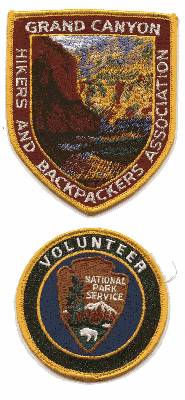
|
Tasks Accomplished List 3-2017 GCHBA (pdf)
(Click the image for the document)
|
|---|
Day 2: Batmania, into The Canyon.
To IG and such. 6 miles. ERM = 12.
The bat squeaks, held firmly and gently in the nubile researcher's gloved hands.
Not a happy bat, yet free of the white nose (fungus) which mammalogists fear. This group of researchers is
netting several species of bats over Garden Creek, near the trail to Plateau Point. What excitement.
This after the hike into The Canyon and starting work on prepping the IG information contact station for exterior
painting.
Later, approaching hiker midnight (9 p.m.), Jeff and Elyssa ask Bill and me to
help dismantle and pack up a German's camp, and Holly and Annette to stand by for possible medical assistance
while the DPS night vision helicopter comes in to extract this German tourist with cardiac issues. All goes well
and we retire to camp.
Just as I'm drifting off to sleep, a deer trips over the guylines for the tent,
totally disrupting the start of an excellent dream.
Know - Kaibab Limestone
The - Toroweap Formation
Canyon's - Coconino SS
History - Hermit Shale
Study - Supai Group (including the Esplanade)
Rocks - Redwall Limestone
Made - Mauv Limestone
By - Bright Angel Shale
Time - Tapeats SS
Know The Canyon's History, Study Rocks Made By Time.
Photos- VIPs at IG-BA 10-2017- Day 2
Day 3: Pumpkin Spice. 4 miles.
The aroma of pumpkin spice muffins wafts out across the mule staging area,
drawing the wandering VIPs closer to the circle of friends. Baker Holly has produced a delectable morning muffin.
Then, we drag equipment into the campground where Holly and I scrape, sand,
wire brush and paint the metal poles for the Indian Garden Campground shade structures. During an earlier
VIP trip we had painted the wood parts of the shade structures. Kathy, Bill, and Annette work on prepping
the exterior of the visitor contact station while Mike builds shelves from an old picnic table in the Ranger
Station. We're waiting to see if the materials for the new deck on the Ranger Station might make it into
The Canyon while we are available to help install the deck.
Mike and Kathy are back at IG after tiling portions of the men's bathrooms
and reroofing kiosks at BA. Cheryl, Cuyler, Tom, India, and Wendy are cleaning BA campground ditches. They
will return soon and help at IG. See the attached list for what we accomplished during this VIP adventure.
Photos- VIPs at IG-BA 10-2017- Day 3
Day 4: Oh Deary! Blueberry today. 3 miles.
Rurrrrh. The sander whirs against the metal support in the Indian Garden
Campground. Holly and I are back at work prepping and painting ramada posts.
Smoke from the controlled burn on the North Rim lowers into The Canyon.
Distant, then closer views of temples and buttes are obscured.
The juvenile deer bleats and whines. "Oh Deery!" is our retort. "Is Deary
a sad sounding malingerer or starving ungulate?" I wonder.
Earlier, blueberry muffin odor fills the air, punctuated by the sharpness of
smoke. Yummy.
John the compost man, Jeff, and Elyssa drop by to say "hi," or help with the
painting and to eat a muffin.
Photos- VIPs at IG-BA 10-2017- Day 4
Day 5: Rotor Wash. Nutella to you. 4 miles.
Smoke fills The Canyon, a gloomy, icky mess. I dream of rain and realize
it's rats chewing. "Chewing on what?" my semi sentient brain asks. On the sunscreen? Boots? I sleep on.
Thoughts of rats chewing on plastic invade my dreams. On a recent backpack trip in The Nankoweap, rats chewed
holes in my soap and my sunscreen bottles. Rats!
Nutella cupcakes at 7 a.m., lovely. The muffin mania continues, unabated and
delightfully enjoyed. Thanks Holly.
Dust swirling, the 750 pounds of Ranger Station pre-assembled deck spins into
view as I hide in the Station from the rotor wash of the NPS hornet. "Wham!", it drops directly in front of
the Station, then plops onto its side, crushing a native cactus. We VIPs wrestle with the deck section, then
discover that it's filled with pavers and buckets of screws. No wonder it's so heavy. Three more sections arrive
in rotor-driven dust and debris. It's a four-corner puzzle (Utah, Arizona, New Mexico, Colorado), deck segments
have been partially put together by the maintenance people on the rim, then delivered to our staging area.
The group wrestles with the sections and parts spilling out of them. There is
lots of preparation work needed before the four corners are joined. While Mike and the Rangers work on the
deck project, I head back to work on prepping and painting the shade structure poles.
Photos- VIPs at IG-BA 10-2017- Day 5
Day 6: Deck Wrangling. A Peachy (muffins) Day. 3 miles.
Ranger Debbie B. calls the lift and we easily ease the deck section into
place. It's coming together well. The deck sections were sent down as a four corners theme, Arizona, Utah,
Colorado, New Mexico. Mike, Debbie, Jeff, and Elyssa continue working on the deck.
Back to work on the ramada poles for me, a second coat of the industrial oil
latex paint. India and Wendy, Mud Queens, hack the reeds and willows along the jungle trail; a grand display
of woman power. Bill and Kathy finish painting the exterior of the information contact building. Tom is
making an elegant and artistic table from old signs. Cuyler is cleaning kiosks and such. Annette is sanding
sun-darkened signs and oiling them. Cheryl is painting the bathroom in the Ranger Station. Everyone
accomplishes a great deal after starting the day with peach muffins.
Holly, Annette, and Elyssa see a Roadrunner and I see a Ruby-crowned Kinglet.
We get together for dinner and rehydrate with warm beverages. Wendy
breaks out with an Irish ballad as dark thirty approaches.
Photos- VIPs at IG-BA 10-2017- Day 6
Day 7: Butterscotch Bits. 3 miles; ERM = 3.
Pumpkin with butterscotch bits muffins are distributed as India and Wendy pack
to hike out. It's sad to see these force of nature women go, yet they go with butterscotch (muffins).
Smoke from the controlled burn on the Kaibab NF to the North slips into The
Canyon as I eat lunch on the shady side of the water facilities deck, having finished a second coat of paint
on the shade structure poles. Finally, this massive job is complete.
Photos- VIPs at IG-BA 10-2017- Day 7
Day 8: Deckanalia. 3 miles.
The GCHBA VIPs, Rangers Elyssa and Jeff straddle Elyssa's nearly new picnic
tables atop the new Ranger Station deck for a closing deckanalia celebration. Tremendous food by Elyssa, two
types of delightful burritos.
It is a day of attempting to close out the assortment of tasks started during
this week. Painting information kiosks, sanding and oiling signs, 46 of them, completing the deck installation,
digging in a rock paver pathway and dragging gravel from the stream bed to form a ramp to the deck, cleaning
buildings, replacing tools, etc.
Photos- VIPs at IG-BA 10-2017- Day 8
Day 9: Old Miners Loop.
13 miles. ERM = 20.
Kate, a new interpretive ranger, glides along the lower Bright Angel Trail
wearing her Halloween Corvid outfit. Lovely.
There's a glowing sweep of Fall Cottonwoods in the Pipe Creek drainage, bookended
by salmon pink ramparts of rocks made by time. Tom, Bill, and I are hiking the Old Miners Loop, from the Old
Bright Angel Trail to the Bright Angel Trail to Phantom via the Black (Kaibab) Bridge to the Silver (BA) Bridge
to the Old Miners "trail", to the Tonto and back to Indian Garden. We start fairly early and are at Phantom for
an early lunch. There we chat with Sjors, the permanent volunteer at BA, about an upcoming service projects - in
March, and about his whale and Condor watching. We invest some time in looking at what the BA part of the group
accomplished and are suitably impressed. Nice work.
We drag into IG after a long day. It's a night to eat the last of the food and
organize for the hike out tomorrow.


|
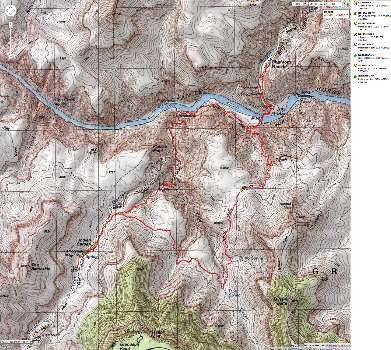
|
|---|
Map - IG to Old BA Trail to BA and up via Miner Route to Tonto - 13 mi
(Click the image to see the map)
|
|---|
|
Photos- VIPs at IG-BA 10-2017- Day 9
Day 10: Scenic Departure.
8 miles. ERM = 15.
Again I'm admiring the splendid golden and yellow Fall foliage as
I hike the Tonto to the South Kaibab, taking the long way out of The Canyon. The water in the Burro
and Pipe Creek drainages supports Cottonwoods that now glow. It's a glorious day, I note, as the Redwall
Skyline Arch sweeps into view on the South Kaibab and I climb toward the rim and the end of yet another
GCHBA service trip, helping the NPS provide stewardship to our precious public lands.
Photos- VIPs at IG-BA 10-2017- Day 10
"I measure your health by the number of shoes and hats and clothes
you have worn out." Ralph Waldo Emerson
"Under the desert sun, in the dogmatic clarity, the fables of theology
and the myths of classical philosophy dissolve like mist. The air is clean, the rock cuts
cruelly into flesh; shatter the rock and the odor of flint rises to your nostrils, bitter
and sharp. Whirlwinds dance across the salt flats, a pillar of dust by day; the thornbush
breaks into flame at night. What does it mean? It means nothing. It is as it is and has no
need for meaning. The desert lies beneath and soars beyond any possible human qualification.
Therefore, sublime."
Ed Abbey
*ERM: Energy Required Miles, are there data to support this
mileage adjustment?
Journal of Outdoor Recreation, Education and Leadership
Petzoldt first proposed his theory in his 1976 book “Teton Trails” to
help backpackers plan trips and calculate their energy needs on mountain trails. “Petzoldt defined one
energy mile as the energy required to walk one mile on the flat. He recommended adding two energy miles
for every 1,000 feet of elevation gain, so a person hiking one mile and 1,000 feet upward would use the
equivalent of three energy miles,” Phipps said.
Petzoldt’s energy mile theory was just a reflection of the mountaineer’s
“gut feeling,” Phipps said. The theory had never been tested in a laboratory before the study began in WCU’s
Exercise Physiology Laboratory in the spring of 2010, Phipps said.
To determine the validity of the theory, the study measured the energy cost
and perceived exertion for walking on flat ground, with and without a 44.5-pound backpack, and up an elevation
gain of 1,000 feet, with and without the backpack, through the collection of metabolic data, Phipps said.
Twenty-four student, faculty and staff volunteers, including 12 males and 12
females, went through four testing sessions as the research continued into fall semester of 2010. The study
results showed that the additional energy cost for ascending 1,000 feet ranged from 1.34 to 2.02 energy mile
equivalents, for an average of about 1.6 miles, compared to Petzoldt’s use of two energy miles for each 1,000
feet. The range revealed by the study was due to the “hikers” personal weight differences, Phipps said.
“It is remarkable that Petzoldt’s energy mile theory is so close to the actual energy cost measured during our
study,” Phipps said. “In the field of outdoor education, it’s important for leaders to include an estimation
of energy requirements during the planning of hiking trips.”
Phipps said the energy required for hiking up steep mountain trails would vary
for individuals and groups, and the variables of the trail would also factor in, but he recommends that
backpackers stick with Petzoldt’s idea of adding two energy miles for every 1,000 feet of elevation gain when
planning trips.
The Validity of Petzoldt's Energy Mile Theory, 2010
Authors: Maridy McNeff Troy, Maurice L. Phipps
Publication: Journal of Outdoor Recreation, Education, and Leadership
Links:

|
Tasks Accomplished List 3-2017 GCHBA (pdf)
(Click the image for the document)
|
|---|
Related Links:
Grand Canyon Hikers and Backpackers Association site (GCHBA)
GCHBA Service Projects Page
Canyon Rover: GCHBA Volunteer Service Project At Phantom RS (Ranger Station) and Bright Angel CG, 3-2017
Finding Phantom: GCHBA Volunteer Service Project At Phantom RS (Ranger Station) and Bright Angel CG, 10-2016
VIP Cottonwood Rehabilitation Cruise:
GCHBA Volunteer Service Project At Cottonwood RS, 3-2016
Bonus Feature from the 3-2016 volunteer project: A Second Ribbon Oasis - AZ Daily Sun 3-30-2016, pdf
VIPs at IG - Volunteering at Indian Garden RS, 2015
GCHBA Gusher at BA - Volunteering at the bottom of The Canyon, 2015
Scenic Toilets of Inner Earth
the geology of the Grand Canyon by the NPS
Eaarth - Living on a fundamentally altered planet by Bill McKibben
Other WV reports about the Grand Canyon:
Click here or on the Looking Lizard to go to all WV reports about The Grand Canyon
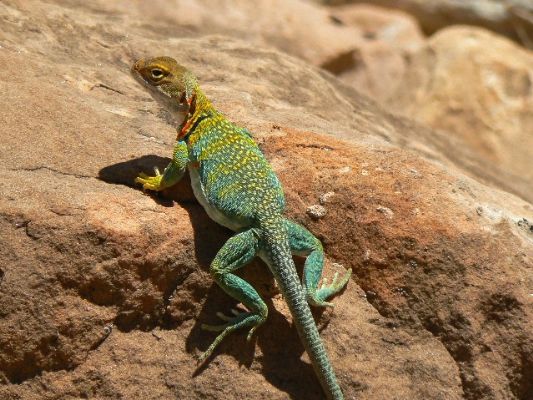
|
|---|
Looking for All Wilderness Vagabond trip reports about the Grand Canyon?
Click the image to go to All WV reports about The Grand Canyon
|
|---|
|
More Truth Than Joke:
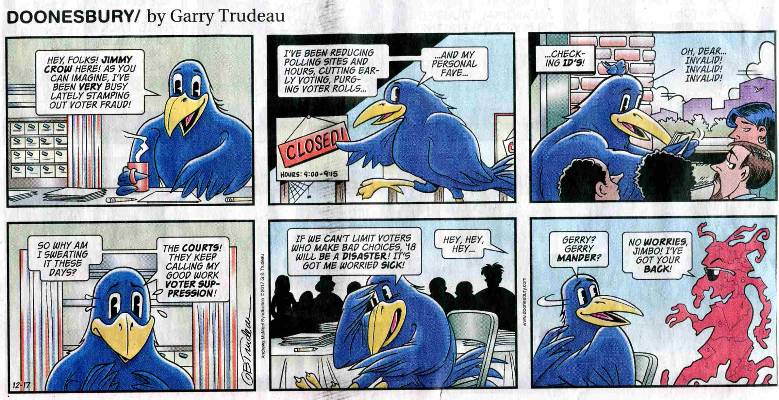
|
|---|
the wrong voters
(Click the image for the full-size image)
|
|---|
|

|
|---|
Deficits are for the GOP
(Click the image for the full-size image)
|
|---|
|
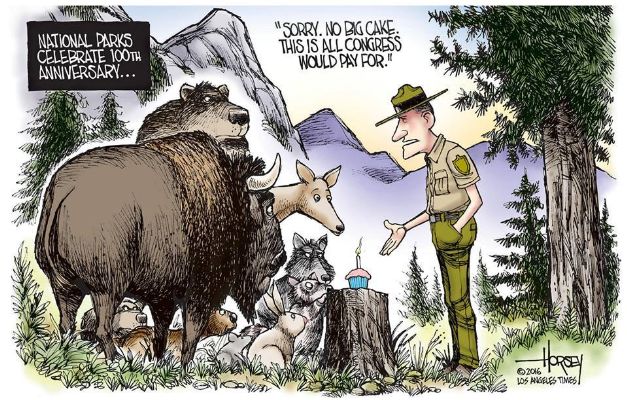
|
|---|
congress, fund the parks
(Click the image for the full-size image)
|
|---|
|

























































 web.jpg)











































